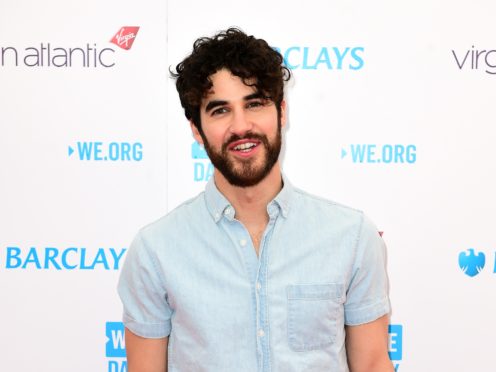Darren Criss has said he will no longer play LGBT characters because he does not want to deprive gay actors of potential roles.
Criss, who is straight, is best known for playing gay characters, including Blaine Anderson in Glee and Andrew Cunanan in American Crime Story: The Assassination Of Gianni Versace.
For the latter, Criss, 31, has earned nominations at both the Screen Actors Guild Awards and the Golden Globes.
But the US star actor, singer and songwriter has vowed to only play straight roles from now on for fear of taking jobs from LGBT performers.
He told Bustle: “There are certain roles that I’ll see that are just wonderful.
“But I want to make sure I won’t be another straight boy taking a gay man’s role.”
Criss added that playing the roles had been “a real joy” but that he no longer feels comfortable doing it, which is “unfortunate”.
He said: “The reason I say that is because getting to play those characters is inherently a wonderful dramatic experience. It has made for very, very compelling and interesting people.”
His comments contrast with those of Cate Blanchett, who in October defended straight actors playing gay characters.

The Academy Award winner said she will “fight to the death” for the right to suspend disbelief.
She disagrees with the idea that a performer can only form a deep bond with a character if they have shared experiences and believes it defies the point of acting.
Blanchett, who played a lesbian in 2015’s Carol, said: “It also speaks to something that I’m quite passionate about in storytelling generally, but in film specifically, which is that film can be quite a literal medium.
“And I will fight to the death for the right to suspend disbelief and play roles beyond my experience. I think reality television and all that that entails had an extraordinary impact, a profound impact on the way we view the creation of character.

“I think it provides a lot of opportunity, but the downside of it is that we now, particularly in America, I think, we expect and only expect people to make a profound connection to a character when it’s close to their experience.”
The debate over who had a right to play certain characters was reignited earlier this year, when Scarlett Johansson dropped out of playing a transgender character following a backlash.
Sir Ian McKellen is among those critical of Hollywood’s attitude to gay actors.
No openly gay man has ever won the Academy Award for best actor, while straight actors have taken home the prize for playing LGBT roles.
Tom Hanks won it for Philadelphia, while Sean Penn scooped it for Milk.
In total, 52 straight people have been Oscar-nominated for playing gay characters.
